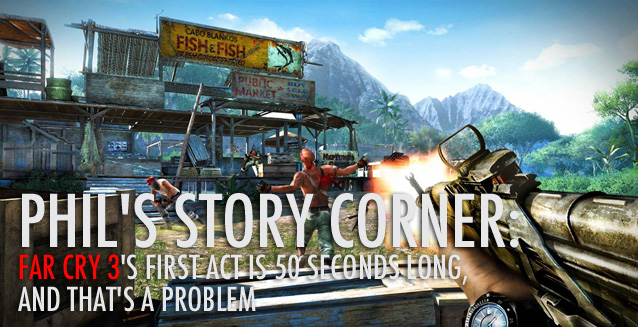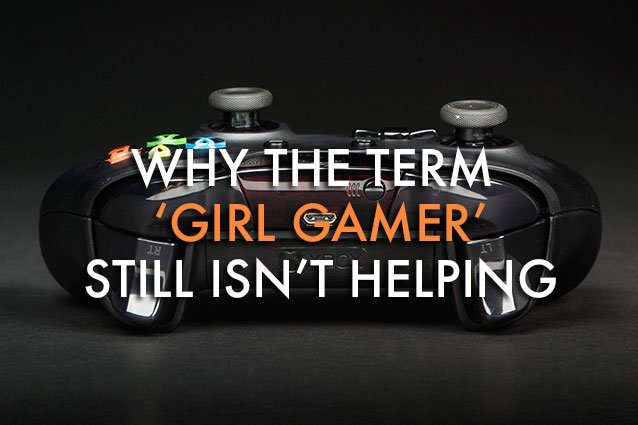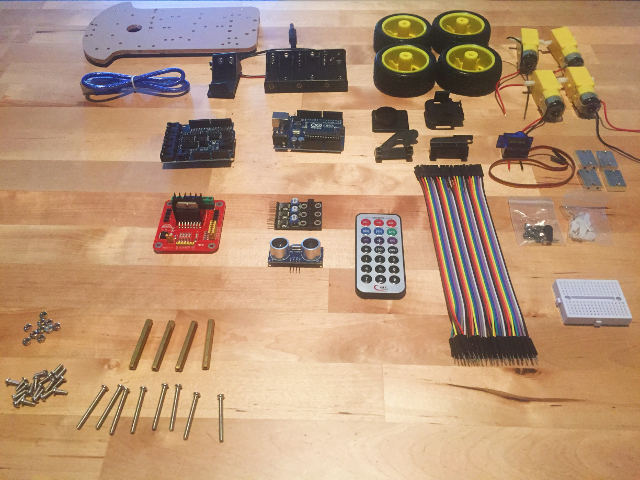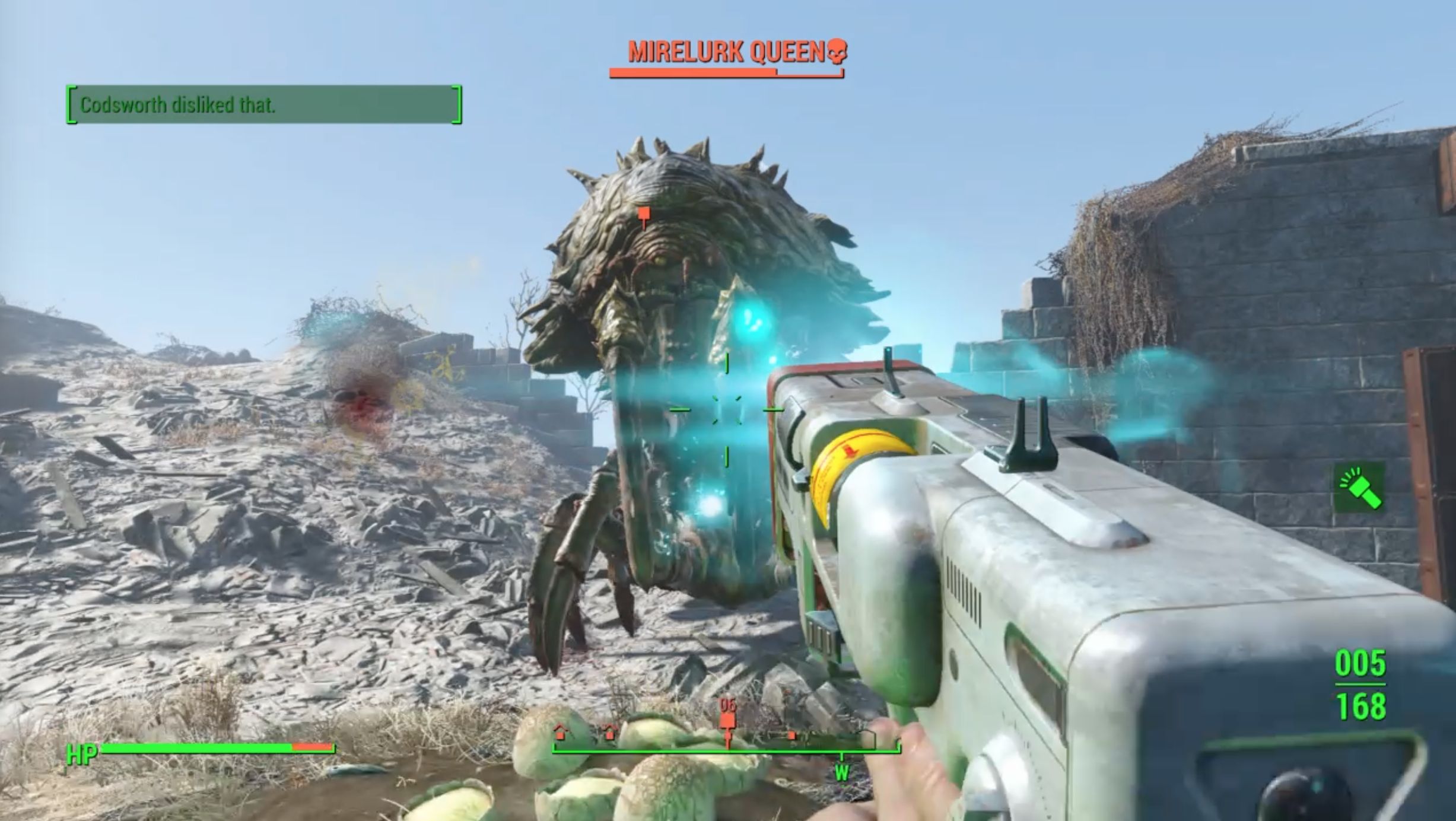


In playing through Far Cry 3, I found its story to be one that is ripe for plenty of discussion, as it has a lot to say and is full of compelling talking points. I could go on and on about it, but I won't. Instead, I want to go over its biggest flaw, one it shares with many other games. But in this particular instance, the flaw of which I speak looms larger than it normally would in your typically big-budget title.
There are times I must admit that not everyone is exactly like me, and now is one of them. In order to compensate for our differences, I'm going to try to explain traditional story structure here. It's important, I promise.
The traditional structure has three acts. In the first, the main characters and the setting are established. In the second act, conflict arises, and our protagonists must respond and grow as characters. In the third act, our protagonists solve the conflict.
Allow me to illustrate this by describing a game that follows the traditional structure in a way that is easy to see: Mass Effect 2. Mass Effect 2 begins with Shepard, your character, dying and your body ending up in the hands of Cerberus. Then you meet the head of Cerberus who sends you off to a human colony to investigate its radio silence. You also meet Miranda and Jacob, two major players, and get to know them a little bit. Then you find out that the Collectors are abducting colonists. That's act one.
Act two establishes the goal. You need to go to the Collector base beyond the Omega-4 relay, but before you can do that you have to recruit a team for your mission while also investigating the Collector threat on this side of the relay.
Act three is the final mission. You go through the relay, take out the base and go home in order to prepare for the events of the next game.
We use this structure because it is dramatically satisfying, but there's nothing that says you must stick with it if you don't want to. Quentin Tarantino has no problem turning the three-act structure on its head, and most of us are pretty happy with how his movies turn out. So when I criticize Far Cry 3's structural issues here in a minute, know that I'm not doing it because I am unimaginative.
The problem I have with Far Cry 3, then, is that it follows the traditional structure, but it does it incorrectly. See, Far Cry 3 has three acts, but act one is less than a minute long.
When you first boot up this game, you are greeted with a cutscene showing you and your friends -- who are all quickly named -- having fun in a tropical vacation doing stuff like hang-gliding, chillin' at the club, riding ATVs, kicking coconuts out of trees and skydiving. It's a cool sequence, to be sure, but fifty seconds in the camera pulls back and you find yourself locked in a bamboo cage being lectured by a slaver. Your skydiving adventure went awry, and you apparently landed in the wrong place. Uh oh.
There is your conflict. You need to escape and rescue your friends. Act two has begun.
But what are your friends' names? The way your long-term memory storage works -- for the vast majority of people, anyway -- is that information is only absorbed if you can assign context to it. That's why you can't stare at a string of numbers and recall it five minutes after looking away. It doesn't mean anything to your mind.
Likewise, the names flashed on the screen for a very short moment at the beginning of Far Cry 3 have no context. You know they belong to people your player character knows, but you don't have any information on those characters to which you can connect those names.
And when they flash six names at you in quick succession, the task becomes far more difficult. In order to store those names, you have to focus your attention on them, but you can't do that, but there are too many of them shown to you at once for you to even get them past your sensory register. Visual memory only lasts about a second if you don't selectively attend to it, and the game does not give you the chance to do this.
So when the second act begins one minute into the game, you have the conflict but no real context for it. We assume that these people we need to rescue are important to our protagonist (whose name we also do not know at this point, I should note), but that's all we've got. We don't know the significance of any of our relationships.
As we move through the game, we finally get to meet these characters as we rescue them. We discover the main character's name is Jason. We learn that Liza is his girlfriend, that Oliver likes drugs, that one of the other captives is Jason's brother. Cool.
But because of the lip service paid to the first act, your investment in the conflict is merely academic. When Jason starts to enjoy -- no, when he begins being turned on by the violence he is forced to enact in order to rescue these people we do not know, we suspect that perhaps he will want to stay on this island fighting this war between the good guys and the slavers. And, of course, that is the decision he eventually makes, but it's a meaningless one, because we have no idea what he is giving up by leaving his friends behind.
And that damages the message of the game, which is an attempt to satirize the joy we take in the horrors we enact in violent video games. The structure ensures that we are too uninvolved in the story to lend much weight to the nuances. That's why people love Far Cry 3 for being "Skyrim with guns," rather than because it made us feel something profound.
Ultimately, Ubisoft was trying to tell an emotionally involving story through this game. But it does not work, because there is no setup. It essentially begins with the second act.
Here's the moral of this discussion: if you're going to tell a story, tell it properly. Far Cry 3 is a shooter, and they had to get to the shooting quickly, damn it. But that sort of pandering undercuts everything Jeffrey Yohalem, the writer, was trying to do here. And so when you look at this game from a story perspective, you have to view it as a failure.




 LG G2 Lite or LG L90: the best and cheapest smartphone
LG G2 Lite or LG L90: the best and cheapest smartphone How to Build a 4WD Arduino Robot for Beginners
How to Build a 4WD Arduino Robot for Beginners Fallout 4: Taking Independence walkthrough
Fallout 4: Taking Independence walkthrough Bloodborne Guide: How To Create Chalice Dungeon, Use Makeshift Altar and Do Co-op
Bloodborne Guide: How To Create Chalice Dungeon, Use Makeshift Altar and Do Co-op Nvidia GTX 480 Tech Demonstration Round-up in HD
Nvidia GTX 480 Tech Demonstration Round-up in HD